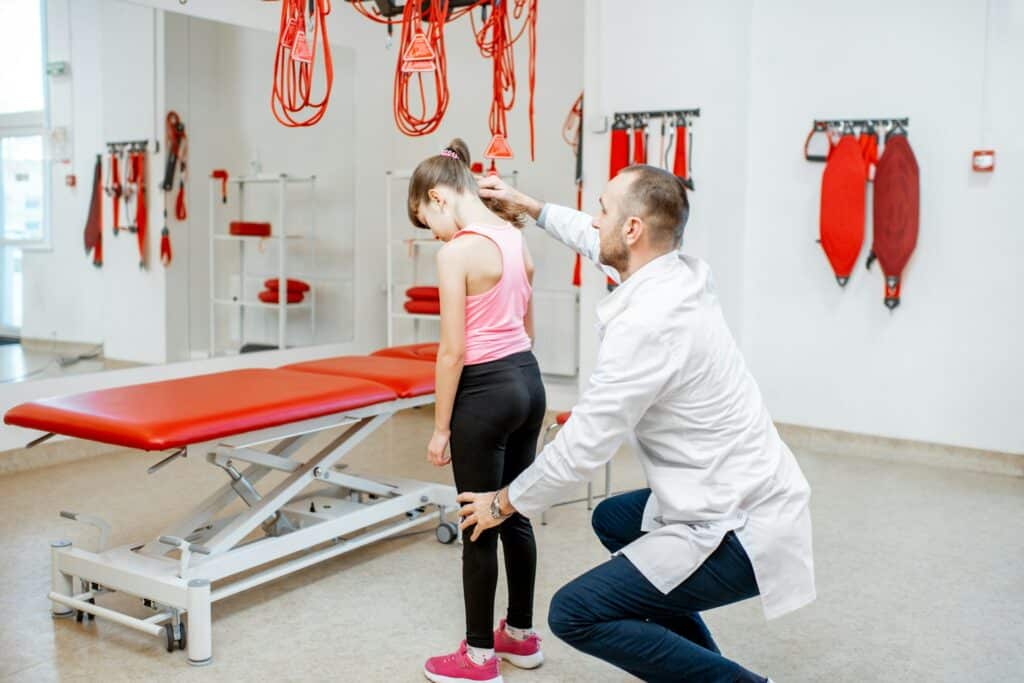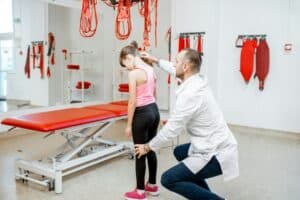Children grow and develop at their own pace, but sometimes they need a little extra support along the way. When a child struggles to keep up with physical milestones or is recovering from an injury, having the right kind of therapy can make a big difference. That’s where pediatric physical therapy comes in. It’s more than just stretching and strengthening. It’s about guiding kids through movement in a way that fits their age, environment, and personal challenges.
For families in Fort Myers, knowing what makes pediatric therapy different helps take some of the guesswork out of getting help. Kids aren’t just small adults. Their bodies are growing and changing quickly, which means they need care that’s built just for them. Understanding how specially designed therapy programs work can be the first step toward helping a child play, move, and feel confident again.
Understanding Pediatric Physical Therapy
Pediatric physical therapy is a type of care focused on helping babies, children, and teens gain better movement and physical function. It goes way beyond what an adult might experience in physical therapy because kids usually need help with different things like learning to walk, sitting up straight, or running pain-free. These skills shape a child’s ability to be active every day.
Unlike adult therapy, which often focuses on recovery after surgery or injury, therapy for kids supports both development and healing. Children might not have an injury at all but are still uncomfortable moving in certain ways or have trouble doing things other kids their age can do. That’s where therapy can step in early and offer support.
Here are some common reasons children may need pediatric physical therapy in Fort Myers:
– Trouble reaching motor milestones like crawling, walking, or jumping
– Poor balance or coordination that causes frequent falls
– Pain in the legs, knees, or back that affects play or school activities
– Movement limits due to a birth condition or injury
– Recovery after surgeries or fractures
– Sports injuries that interrupt activity or cause uneven muscle use
Therapists who work with children also use different tools and techniques. Sessions might include play-based exercises, obstacle course training, or guided stretching that feels more like playtime than therapy. The goal is to build trust and make progress during movement without pressure, which keeps children more willing to participate. Whether it’s helping a toddler learn to balance or supporting a teenager after a sports injury, pediatric physical therapy is centered on what’s realistic for their age and what will carry into their daily life.
Benefits of Pediatric Physical Therapy for Children
Getting your child into the right program can create big changes in how they move and feel. These benefits don’t just show up in therapy sessions. They carry over to school, home, and play.
Here’s how pediatric physical therapy supports growth and confidence:
1. Helps With Development and Motor Skills: Therapy helps guide the body through basic movements by improving posture, walking patterns, or hand-eye coordination. This is especially helpful for younger children learning milestone movements.
2. Builds Strength and Flexibility: Many kids with pain or movement issues have muscles that are tight, weak, or not being used in the right way. Therapy focuses on waking up these muscles in safe ways to support joint health and smooth movement.
3. Supports Kids with Physical Conditions: Children with conditions like muscular disorders, developmental delays, or previous injuries often need more hands-on help to stay mobile. Physical therapy gives them a plan and a path forward.
4. Boosts Confidence: When kids start moving better, they usually start feeling better. Their ability to keep up with peers, join activities, or feel steady on their feet can positively affect how they view themselves.
One example is a child who always avoided team sports because of poor balance and frequent trips or falls. After just a few sessions of play-focused physical therapy, her coordination started to improve. That small progress meant she could join her classmates in gym class without worry, giving her more confidence at school.
It’s about more than just muscles and bones. It’s about kids being able to enjoy their lives without feeling left behind. And when care is focused on personal needs, therapy becomes something they look forward to instead of fear.
Customized Programs for Different Ages and Needs
No two kids are the same, and that holds true when it comes to therapy too. Pediatric physical therapy in Fort Myers takes a hands-on, personalized approach that matches the child’s age, condition, and learning style. A toddler who’s just learning to walk doesn’t need the same focus or exercises as a teen recovering from a sports injury. Each stage of growth needs its own plan.
For infants and toddlers, the focus is often on hitting early movement milestones like crawling, standing, or walking. Therapy may include rolling exercises, sensory play, or guided stretches that teach the body how to move in smoother, more controlled patterns. For this age group, it’s often about prevention by correcting delays early so they don’t lead to long-term problems later.
School-age kids come with their own set of needs. Maybe they’ve developed poor posture from sitting too long in class, or maybe they’ve had a fall that has made them wary of physical activity. These kids benefit from stronger coordination work and muscle retraining. Therapy might look like balance games, mini obstacle courses, or strength-building drills they can practice during recess or physical education classes.
Teenagers often need therapy for more focused rehabilitation, sometimes due to sports injuries, overuse of muscles, or complications from growth spurts. Therapy at this stage tends to be more structured but still approachable. A therapist might use resistance training, mobility work, or exercises that feel more athletic, which helps teens take their recovery seriously without feeling babied.
Parents know their child best, so working closely with a therapist who listens makes all the difference. A good plan doesn’t just target the pain. It builds up the child’s overall ability to move and thrive through every stage.
Choosing the Right Pediatric Physical Therapist
Choosing the right pediatric physical therapist in Fort Myers isn’t always easy, but there are a few signs that can help families feel more confident in their choice. You want someone who not only has clinical skill but who connects easily with kids and knows how to make them feel at ease. Children don’t always understand why therapy matters, so the right therapist can make the work feel more like fun than frustration.
Here’s what to look for:
– A calm, welcoming approach that helps children feel safe
– Knowledge of age-specific challenges and movement patterns
– An ability to explain therapy goals in ways kids can understand
– Patience and flexibility for adapting sessions to the child’s mood or energy
– A plan that includes input from the child’s parents, teachers, or doctors
Therapists should never rush through sessions or expect instant results. Progress looks different for every child. A play-based session for a preschooler might focus on balance using blocks or foam mats. Meanwhile, a session with a middle school student may work on core strength and longer stretches to support post-surgery healing.
Getting started often begins with a basic movement evaluation where the therapist checks for strength, balance, range of motion, and coordination. From there, they build a therapy plan that can grow with the child’s needs. It’s not about ticking boxes. It’s about making real improvements that help the child feel happier during movement.
Why Special Physical Therapy Programs Matter for Children
When therapy is designed with a child’s personal development in mind, it becomes more than just treatment. It becomes part of their everyday success. Children in Fort Myers who feel pain or struggle with motor skills deserve support that meets them where they are. A one-size-fits-all approach won’t cut it, and that’s why special therapy programs can be so valuable.
From helping babies build strength for their first steps to guiding teens back into game shape, pediatric physical therapy covers every checkpoint along the way. And while the exercises, routines, and pacing can change, the goal remains the same: to help every child move better, feel stronger, and face the day with more confidence.
Families who take this step for their children are often relieved when they begin to see progress, no matter how slow or steady it might be. Getting the right care can help reduce stress, improve comfort at school or home, and open up a new sense of freedom. There’s nothing like seeing your child regain joy in movement again. That’s something no parent forgets.
When you’re ready to explore how specialized therapy can support your child’s development, learn more about pediatric physical therapy in Fort Myers by discovering the tailored care offered at Grace Medical & Chiropractic. Our approach focuses on helping young patients build strength and confidence through every stage of growth.





